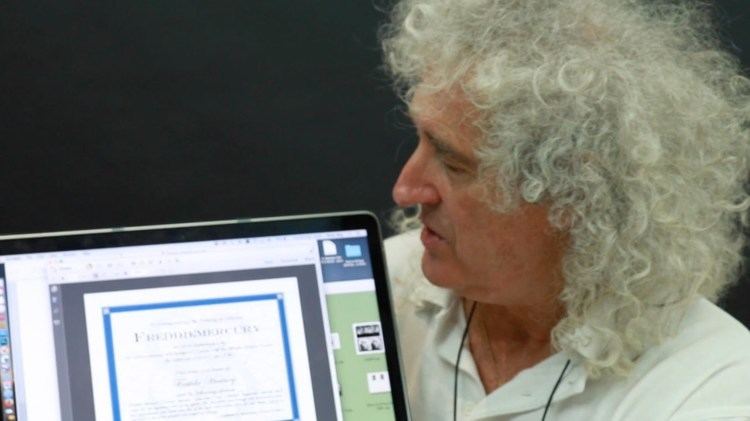Discovered by H. Debehogne MPC designation 17473 Freddiemercury Observation arc 33.99 yr (12,415 days) Aphelion 2.76 m | Discovery date 21 March 1991 Minor planet category main-belt · (inner) Discovered 21 March 1991 Orbits Sun Asteroid group Asteroid belt | |
 | ||
Alternative names 1991 FM3 · 1982 VC91999 JE127 | ||
17473 Freddiemercury, provisional designation 1991 FM3, is a bright asteroid from the inner regions asteroid belt, approximately 3.4 kilometers in diameter. It was discovered on 21 March 1991, by Belgian astronomer Henri Debehogne at ESO's La Silla Observatory in northern Chile.
The asteroid orbits the Sun at a distance of 2.0–2.8 AU once every 3 years and 8 months (1,350 days). Its orbit has an eccentricity of 0.16 and an inclination of 1° with respect to the ecliptic. The first observation was made at Crimea–Nauchnij in 1982, extending the asteroid's observation arc by 9 years prior to its discovery. According to the survey carried out by the NEOWISE mission of NASA's Wide-field Infrared Survey Explorer, the asteroid measures 3.4 kilometers in diameter and its surface has a high albedo of 0.313. As of 2016, the asteroid's composition, as well as its rotation period and shape remain unknown.
On 4 September 2016, the day what would've been the day before Freddie Mercury's 70th birthday, the International Astronomical Union and the Minor Planet Centre named it "Freddiemercury" after Freddie Mercury (1946–1991), as the asteroid was discovered in the year that the singer died (M.P.C. 101215) and its provisional designation included his initials. The naming was announced by Brian May at Montreux Casino to mark the singer's 70th birthday.
